Visit The Bhagwan Parshwanath Digambar Jain Mandir In 2026

The Bhagwan Parshwanath Digambar Jain Mandir is a tenth-century Jain temple in Khajuraho, Madhya Pradesh, India. It is today dedicated to Parshvanatha, but it was most likely established as an Adinatha shrine during the Chandela dynasty. The entrance features an inscription with a flawless magic square. It is a UNESCO World Heritage Site, together with the other temples in the Khajuraho Group of Monuments, due to its remarkable art, architecture, and Chandela era witness. The Parshvanath Temple, which belongs to the Eastern Group, is one of Khajuraho’s most exquisite temples. The current Parshvanath idol dates from the sixth decade of the nineteenth century. As a result, this shrine is dedicated to Adinath.
Bhagwan Parshwanath Digambar Jain Mandir History and Architecture
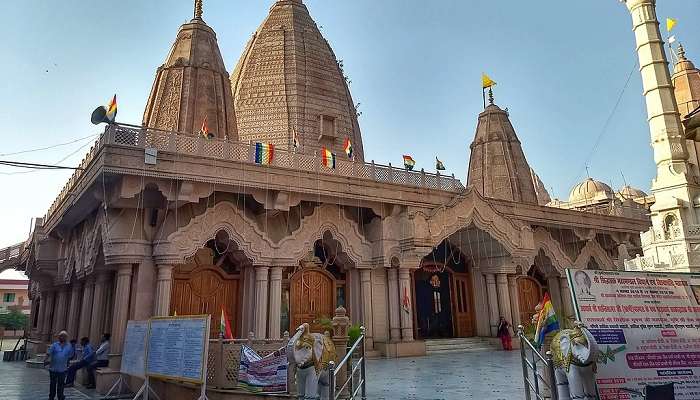
Based on the existing art, architectural, and epigraphic evidence, this temple was built between 950 AD and 970 AD under the reign of Yashovarman’s son and successor, Dhang. The temple is located on a high platform, and the ancient ornamentation is virtually complete. The temple’s primary sections include Mandap, Maha Mandap, Antaral, and Garbha Griha. A circumambular walkway has been built around it. The Mandap’s arch is richly ornamented with idols. It also contains idols of Shaal Bhanjikas, Apsaras, and Parshva Devi. Its ceiling resembles an inverted lotus petal. In the centre of the ceiling hangs a tassel with carved figures of flying Vidyadhars. The mandap has a seven-branched entryway that leads into the temple. In addition to embellishments of deer, lotus flowers, Ganas, Vyaalas, Mithunas, creepers, statues of Makar Vahini Ganga and Kumvahini Yamuna, are etched. Gandharva and Yaksha Mithun are carved in various poses on the arches over the river, playing drums, trumpets, manjiras, conches, mridangas, and string instruments.
The mandap’s wall features the base of the pillars from within, three rows of statues from outside, and windows designed to illuminate the temple’s interior. The inner half of this temple is unique in that the space between the pillars has been employed to build eight sub-altars on which Tirthankara sculptures are installed with majestic and lovely entourages. The sanctum is connected to the mandap. Aside from it, there is a central female statue in the sanctum.
Must Read: Chanderi In Madhya Pradesh
Sculptures And Scriptures
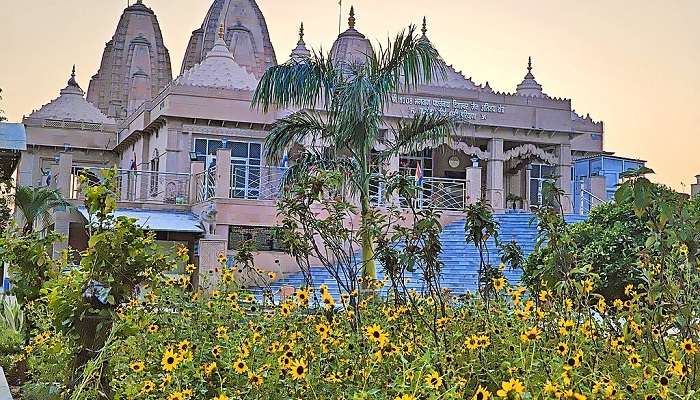
The temple is divided into three lobes and is surrounded by several statues. The statues in the lower two lobes are in standing position, but those in the higher lobes are in flying or sitting position. These statues appear to embody the notion of delicate harmony. The beauty who are engaged with daily tasks such as grooming, offering Kantak, and composing letters are magnificent. This temple also houses a beautiful Khajuraho sculpture of a young woman applying lac to her feet. The Mukha Chastushki opens within the Guhmandal. Guhmandal’s door frame is decorated uniquely. The Jain Mandap of the temple has a lovely ceiling. It has fine carvings that have been carefully crafted. The Shikhara was formed by uniting the roofs of the Mahamandap and Garbhagriha.
The Jangha part of the Parshvanath temple is adorned as well with carvings of stunning women. There are Bhadras on all sides of it, each with five Rathas. Jain idols are exclusively made on the outer Rathikas; the remaining areas have idols with a Brahminical influence. Small Rathas can be obtained from small terraces or rest cottages. On these balconies, there are Dev, Apsara, and Vidyadhar idols from the Jangha. The idols have been arranged in three lines on the Jangha. The Jangha here is separated into plaques. Bhadras drop on the Parshva Lindas in the shape of origins from the temple’s sanctum sanctorum on the southern side. Above the Parshva Lindas are Rathikas that lead to the principal rest houses In addition to Karan Shringa, there’s also Shringa on the higher Parshva Lindas. The primary Shringa is of Pancharath nature, while the others are of Trirath nature. The Moolamanjari is saptarth by design and has eleven lands. The Moolamanjari has two uru, or horns, on both sides. There are twelve Karana Shringa on either side.
Specialities Of The Bhagwan Parshwanath Digambar Jain Mandir
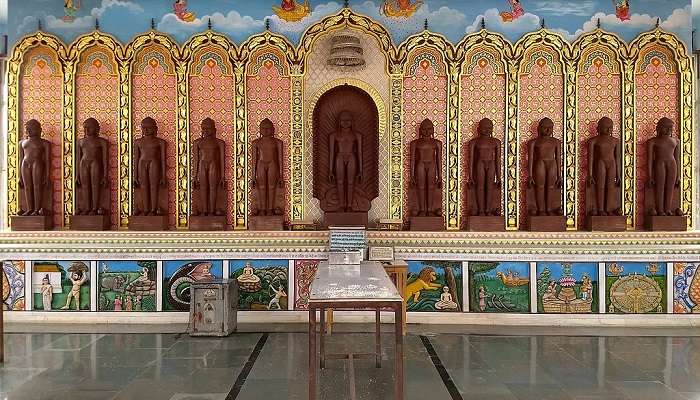
The northern side of the north-western corner features a lovely statue of Kama and Rati. Kama has a bird and three arrows with an individual’s head in his grasp. This statue is holding Rati with his left hand. It holds a bow on the other hand. The Rathas’ five windows are also autonomous, and sculptures cannot be placed on them. This temple is considered the first in terms of statuary variety.
A lovely figure of Chakreshwari, wearing a crown, stands at the inner entryway of the Mahamandap. Chaturbhuj Saraswati is to her right. Varaha and a swan accompany her, whereas another statue on the opposite side is without a vehicle. There are deity and apsara statues on the inner circumambulation balconies, as well as Vyaal on the resting place. The preceding description indicates that this temple is a god museum. Idols of various gods, including Gandharvas, Kinnars, Yakshas, and Apsaras, can be found here. There are numerous categories and sorts of gods. The temple’s idols are lovely and faithfully portray the universal appeal of religion.
Suggested Read: Places To Visit In Khajuraho
Location Of The Bhagwan Parshwanath Digambar Jain Mandir
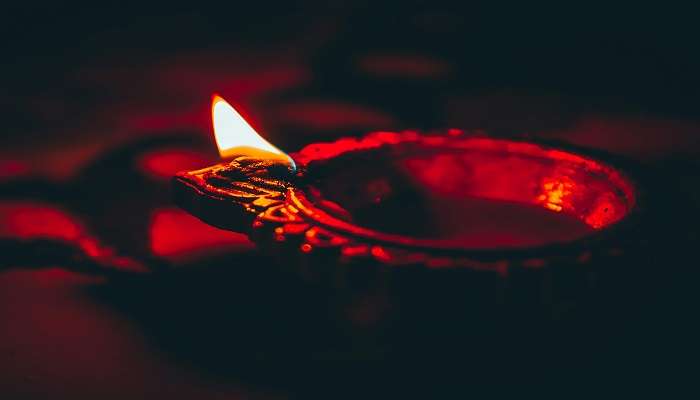
Shri DigamberAtishayKshetra, Khajuraho, is located in the village Khajuraho, Taluka Rajnagar, District Chhatarpur (M.P.). Khajuraho is located 60 miles from Mahoba, 152 km from Satna, and 13 km from Jhansi. UNESCO has designated Khajuraho as a World Heritage Site due to its spectacular structures. Khajuraho’s temples are split into three categories: western, eastern, and northern. The Eastern category is mostly made up of Jain temples. Many Jain inscriptions from the Chandella period can be observed in Khajuraho.
Best Time To Visit the Temple
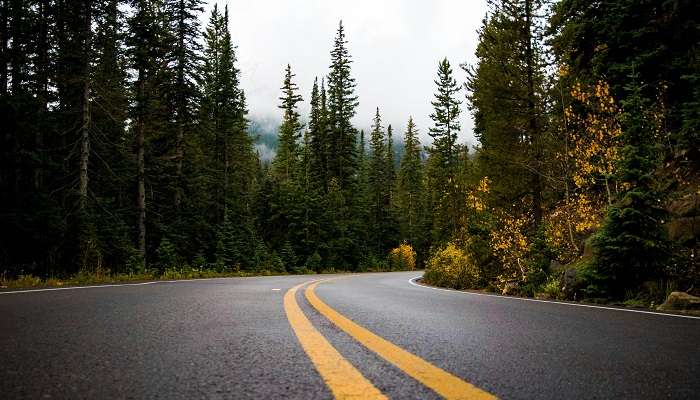
Khajuraho is best explored anytime between July and March. The city of Madhya Pradesh is an amazing collection of old cave temples. The nice months are the greatest time to explore these cherished treasures. Summers in the city are warm. Hot weather prevents you from enjoying the scenery. The monsoon season in the city is nice. Moderate rainfall is expected for a few days during the season. The beautiful months of October to February are among the greatest, as tourists from all over the world visit. The Khajuraho Dance Festival, held annually in February, is the finest time to arrange your trip. Enjoy the country’s rare classical dances against this magnificent backdrop.
Further Read: Things To Do In Khajuraho
Now that you have a list of things to keep in mind for your next vacation to see the Bhagwan Parshwanath Digambar Jain Mandir among the Khajuraho Temples, make sure you plan your trip to Khajuraho and get in touch with divinity. Accompanied by your loved ones, this experience will be more rewarding as you delve into its religious essence.
For our editorial codes of conduct and copyright disclaimer, please click here.
Cover Image Source: Facebook
Frequently Asked Questions About Bhagwan Parshwanath Digambar Jain Mandir
What is the best time to explore Khajuraho?
The best time to visit Khajuraho is between October and March, when the weather is pleasant.
How to reach Khajuraho?
Khajuraho is accessible via air, road, and rail. Khajuraho has its own airport, which is well-connected to large towns including Delhi and Varanasi.
Is there any entry fee for Khajuraho?
Yes, the charge varies between Indian nationals and foreign tourists, and it includes admission to a set of temples in the Western complex, which is the main attraction.
Is photography allowed inside Khajuraho Temples?
Photography is permitted within the temple complexes; however, please respect the site's holiness and avoid flash photography, as it can damage the antique statues.
What are other attractions near Khajuraho?
Aside from the temples, visitors can explore the Panna National Park, which is roughly an hour's drive from Khajuraho. The Ken River and Raneh Falls are among prominent local natural attractions.
People Also Read:
Priyakant Ju Mandir Lalita Devi Mandir Prem Mandir
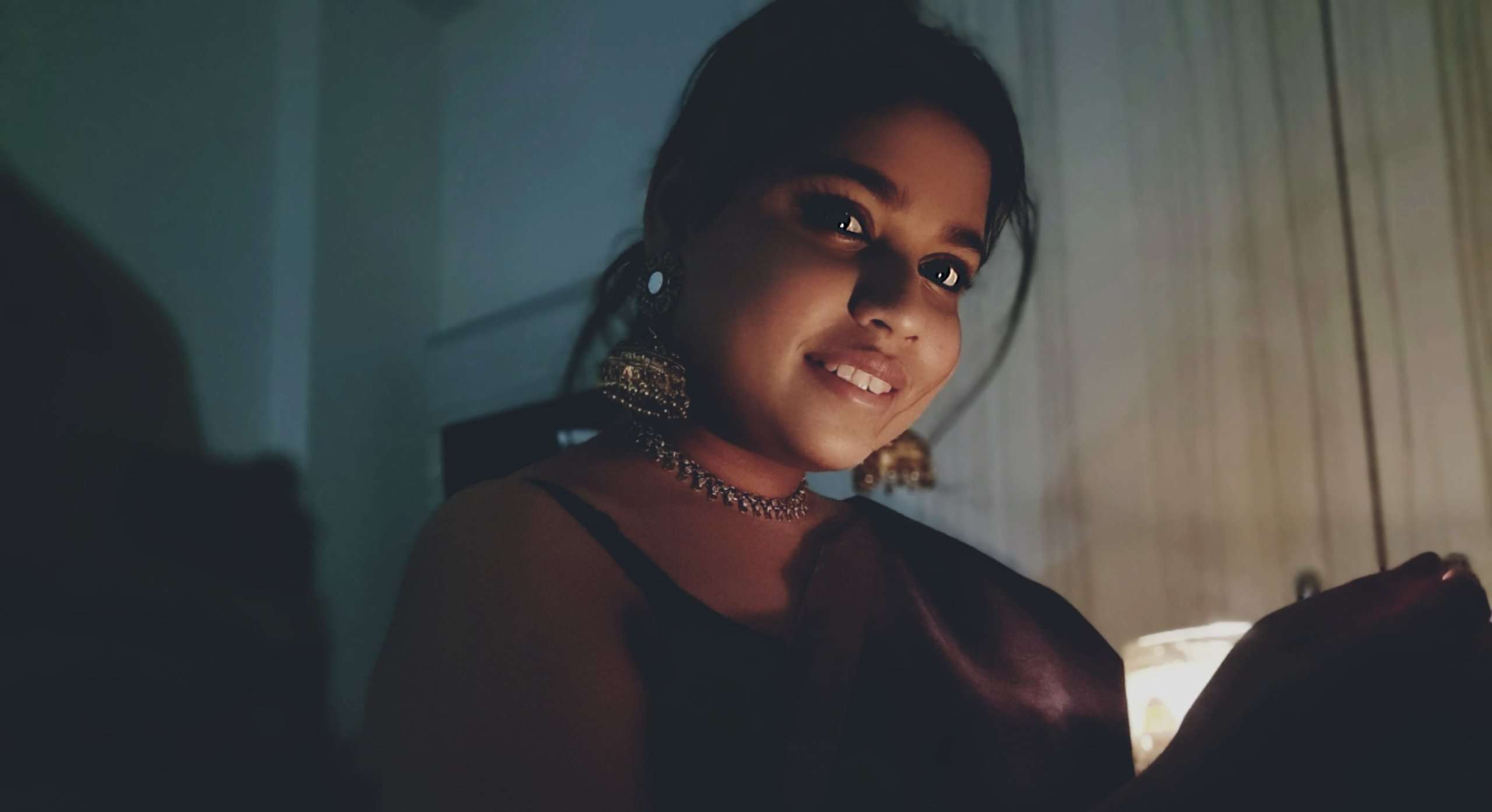
As a Travel Content Writer, I live to conquer the world of globetrotting with words. With my unquenchable thirst for storytelling, I believe that my words will inspire you to travel around the world’s breathtaking landscapes. As for me, I am an unapologetic selenophile, who loves to wander around in a starry night!











